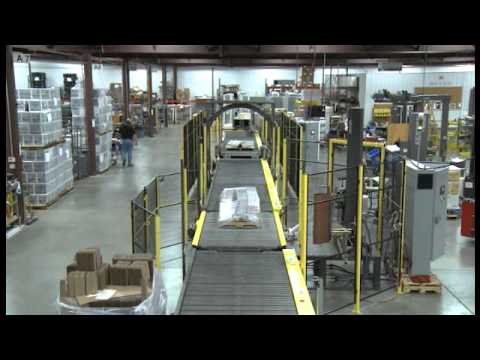Not All Biodegradable Stretch Wrap is Created Equal: Unveiling the Truth About Eco-Friendly Packaging
Plastic waste has become a growing concern in our society, prompting individuals and businesses alike to seek alternative packaging solutions that minimize environmental impact. One such solution is biodegradable stretch wrap, which claims to break down naturally over time. However, a recent investigation has revealed that not all biodegradable stretch wraps live up to their claims. In this article, we will explore the differences between various types of biodegradable stretch wraps and shed light on the truth behind their biodegradability.
[The Truth About Biodegradable Stretch Wrap | Stretch Film Secrets Revealed], a thought-provoking YouTube video, features an insightful interview with a knowledgeable expert, the Vice President of a prominent packaging company. The video highlights the importance of understanding the differences among biodegradable stretch wraps and educates viewers on the significance of making informed decisions when selecting sustainable packaging options.
To delve further into the subject, let’s take an in-depth analysis of the information presented in the video.
Biodegradable stretch wraps can be broadly categorized into two types: oxo-biodegradable and compostable stretch films. Oxo-biodegradable stretch wraps are conventional plastic films with additives that accelerate their degradation process. These additives, known as pro-degradants, help break the plastic down into smaller fragments more quickly. On the other hand, compostable stretch films are made from bio-based materials such as corn starch and degrade through natural processes, eventually turning into compost.
The video highlights the shortcomings of oxo-biodegradable stretch wrap, emphasizing that it does not truly biodegrade. Instead, it undergoes a process called fragmentation, where it breaks down into microplastics that can persist in the environment for hundreds of years. This revelation raises concerns about the long-term impact of using such stretch wraps, as they contribute to plastic pollution rather than solving the problem.
Compostable stretch films, as discussed in the video, offer a more sustainable alternative. These films are designed to break down in a composting environment, leaving behind no harmful residues and enriching the soil with valuable nutrients. However, it is essential to distinguish between “home compostable” and “industrial compostable” films. Home compostable stretch wraps are suitable for backyard composting systems, while industrial compostable stretch wraps require specific conditions, such as higher temperatures, to decompose effectively.
Now that we understand the differences between these two types of biodegradable stretch wraps, it’s crucial to consider the implications for businesses and individuals.
For business owners, choosing the right stretch wrap is not just a matter of environmental consciousness; it also has significant financial implications. The video emphasizes that using oxo-biodegradable stretch wraps may lead to higher costs in the long run. As these wraps break down into microplastics and remain in the environment, they can potentially harm wildlife and contaminate ecosystems. This, in turn, may lead to stricter regulations on plastic usage, fines, and reputational damage. By opting for compostable stretch wraps, businesses can demonstrate their commitment to sustainability and avoid potential future expenses.
Individual consumers also play a vital role in the fight against plastic pollution. As the demand for eco-friendly products continues to rise, more companies are offering sustainable alternatives. By consciously choosing compostable stretch wraps, consumers can make a positive impact and contribute to reducing plastic waste. Supporting environmentally responsible companies that offer compostable packaging solutions encourages the broader adoption of sustainable practices throughout the industry.
In conclusion, not all biodegradable stretch wraps are created equal. The YouTube video, [The Truth About Biodegradable Stretch Wrap | Stretch Film Secrets Revealed], has shed light on the varying degrees of biodegradability among these packaging solutions. While oxo-biodegradable stretch wraps fragment into microplastics, causing long-term harm, compostable stretch wraps offer a more genuinely eco-friendly option. It is crucial for businesses and consumers alike to make informed choices and opt for packaging solutions that align with their sustainability goals.
The momentum for change is building, and it’s up to us to embrace environmentally responsible practices. By supporting initiatives like the Buy Orbital Stretch Wrapper and demanding transparent information about packaging materials, we can push the industry towards a more sustainable future. Let’s choose wisely and make a positive difference in the fight against plastic waste.
Orbital Stretch Wrapper
“The Real Facts on Biodegradable Stretch Wrap | Unveiling Stretch Film Secrets and Discovering the Ultimate Orbital Stretch Wrapper Deal”


